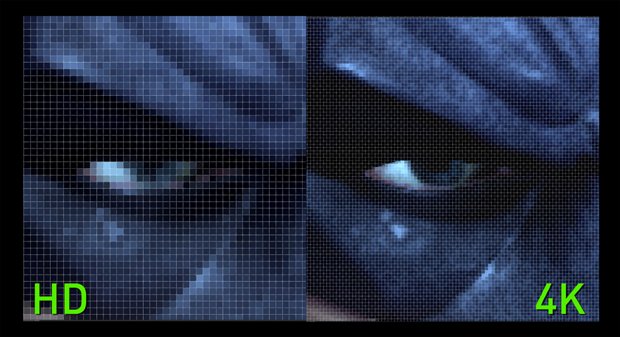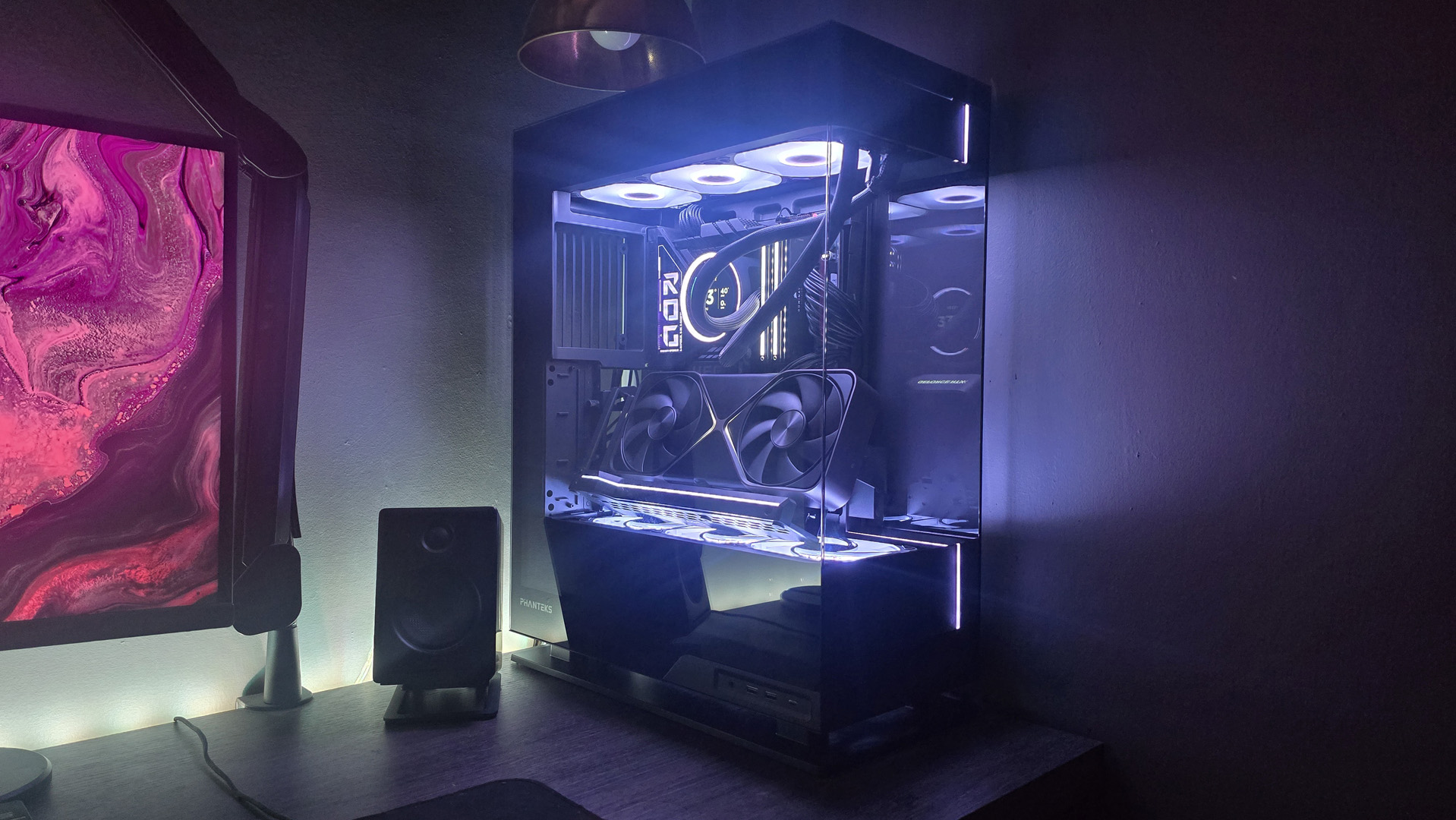4K Monitors: Everything You Need to Know

Ultra HD (UHD) is the next-gen PC resolution—here’s why you have to have it
Dream Machine 2013 had some bitchin' hardware, but most of it was available at retail for any well-heeled hardware hound. One part, though, was not available to the unwashed masses: its glorious 4K monitor. You see, 4K was an other-worldly resolution back in mid-2013, simply because it offered four times the resolution of 1080p—at a wallet-busting expense of $3,500.
Now, though, 4K is available and relatively affordable, and all modern games support it, making it one hell of an upgrade. Over the next pages, we'll tell you all about 4K, show you what you need to run it at its maximum output, and explore 4K gaming benchmarks, too. But as sweet as it is, it's not for everyone, so read this guide before making the move.

What is 4K?
a slight misnomer, but catchier than ultra hd
To put it simply, 4K doubles the standard 1920x1080 resolution both vertically and horizontally to 3840x2160, which is quadruple the pixels. We can already see you folding your arms and scanning the page for a downvote button, saying, “That’s obviously not true 4K. It only sums up to 3,840 pixels.” “True” 4K resolution is a term used in the movie industry. When you hear about movies being shot in 4K, they’re typically shot at 4096x2160 with an aspect ratio of 17:9. On the PC side, we generally run with television makers, who have mostly settled on a resolution of 3840x2160, which uses the same 16:9 aspect ratio as 1080p. Despite this being far short of 4,000 pixels horizontally, television and monitor makers have all settled on 4K as the term to push, rather than Ultra HD. In other words, we don’t make up the buzzwords, so hate the game, not the player.
In a historical context, 4K is simply the next rest stop along the path of technological progress. Way back in the day, we ran our displays at 640x480, then 800x600, then 1024x768, and then 1280x1024, and so on. As graphics cards became more powerful, we were slowly able to bump up our display resolutions to where they are now, which for a large majority of gamers is 1920x1080, or 1080p. Society has settled on 1080p as the go-to resolution right now, simply because those monitors (and TVs) are very affordable, and you don’t need a $500 graphics card to run today’s games at that resolution.
Not everyone is average, though. Many enthusiasts today run 27-inch or 30-inch monitors at much higher resolutions of 2560x1440 or 2560x1600, respectively. That may seem like a step up from 1920x180, but a GeForce GTX 780 ti or Radeon R9 290X isn’t even stressed by 2560x1440 gaming. Factor in PCs with multiple GPUs, and you start to wonder why we’ve been stuck with 2560x1600 for more than seven years, as everything else has leapt forward. We won’t question that wisdom, but we do know that it’s time to move forward, and 4K is that next step. Looking ahead, the industry will eventually move to 8K, which quadruples the pixels, and then 12K, and so forth. In fact, some vendors already demonstrated resolutions way beyond 4K at CES 2014, including Nvidia, which ran three 4K panels at 12K using four GTX Titans in SLI. For 2014 and beyond, though, 4K is the new aspirational resolution for every hardcore PC gamer.
It’s All About the Pixels Per Inch
You know how every time we pass around the sun once more and it’s a new year, people joke about their “New Year’s Resolution” being some sort of super-high monitor resolution? Well, we do it, too, because as hardware aficionados there’s always room to grow and new boundaries to push. We want our hard drives to get bigger right alongside our displays, so the move into 4K is something we have been looking forward to for more than a year; as resolution scales up, so does the level of detail that is rendered on the screen. The official term for this spec is pixels per inch, or PPI, and it’s a good bellwether for how much detail you can see on your display.
The biggest gaming news, reviews and hardware deals
Keep up to date with the most important stories and the best deals, as picked by the PC Gamer team.
To see how PPI varies according to screen size, let’s look at a few examples. First, a 24-inch 1920x1080 display sports roughly 91 pixels per inch. If you bump up the vertical resolution to 1,200 pixels (typical on some 16:10 ratio IPS panels), you get a PPI of 94. If you crank things up a notch to 2560x1440 at 27 inches, the PPI goes to 108, which is a small bump of about 20 percent, and probably not very noticeable. Moving on to 2560x1600 on a 30-inch panel, you actually get lower density, arriving at a PPI of 100. To put this in the context of a mobile device, the Google Nexus 5 smartphone has a 4.95-inch display that runs a resolution of 1920x1080, giving it a crazy-high PPI of 445. The iPad’s 9.7-inch screen delivers a PPI of 264, and the iPhone 5’s PPI is 326 pixels. Clearly, there’s a lot of room for improvement on the PC, and 4K is a step in the right direction.

Pixel Peeping
Now, let’s look at the PPI for a few of these fancy new 4K monitors that are coming down the pike. We’ll start with the model we used for Dream Machine 2013, which is an Asus PQ321Q. With its resolution of 3840x2160 spread across 31.5 luscious inches, its PPI is a decent 140, a noticeable increase from a 2560x1600 display. Not enough for you? Dell has a new 24-inch 4K monitor dubbed the UP2414Q that shrinks your icons for you while retaining their sharpness. Still, it has the highest PPI yet for the desktop panel at a skyscraping 185 pixels. Slightly below the Dell is a new Asus LCD named the PB287Q, which at 28 inches has a modest PPI of 157 pixels. Keep in mind that in some cases, this is a 50 percent increase in the number of pixels per inch, so when you tally that up across the entirety of the display, it equals quite a few more pixels, which results in a lot more detail that is visible even to the naked and semi-clothed eye.

